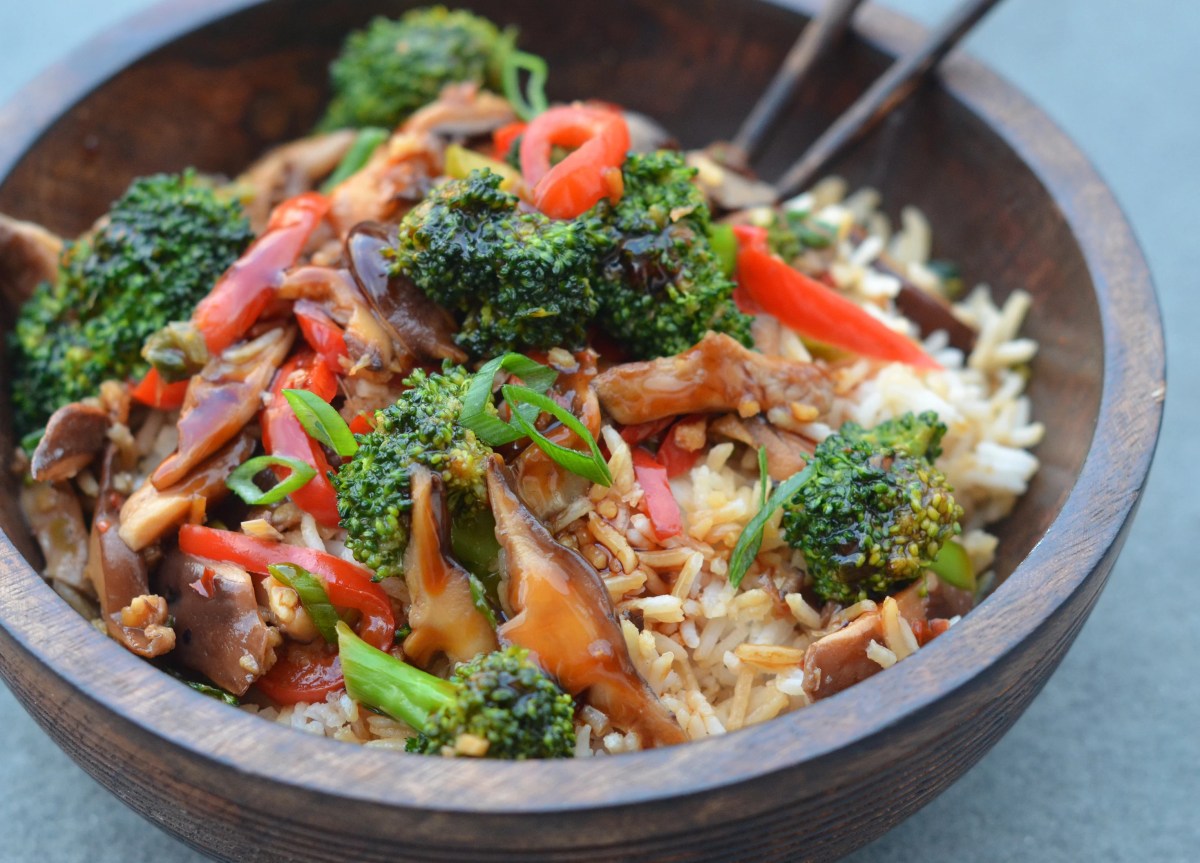Embark on a culinary adventure where vibrant vegetables dance with aromatic spices, all without a trace of dairy! Discover the secrets to crafting dairy-free stir-fries that explode with flavor, from creamy coconut milk bases to zesty peanut sauces. We’ll explore a world of ingredient combinations, each designed to tantalize your taste buds and nourish your body. Prepare to be amazed by the textures, the aromas, the sheer deliciousness of these healthy and satisfying meals.
This guide delves into the heart of dairy-free stir-fry creation, offering a comprehensive exploration of base options, essential ingredients, flavor pairings, and a detailed step-by-step recipe. We’ll journey through the visual aspects of cooking, highlighting the transformative power of heat and the beauty of fresh produce as it blossoms into a culinary masterpiece. Get ready to elevate your cooking game and experience the joy of creating flavorful, dairy-free stir-fries that are both healthy and incredibly delicious.
Essential Dairy-Free Stir-Fry Ingredients

Creating vibrant and flavorful dairy-free stir-fries hinges on selecting the right ingredients. The key is to build layers of taste and texture, using ingredients that complement each other beautifully. This section will explore the essential components for crafting a truly delicious and healthy dairy-free stir-fry.
Dairy-Free Stir-Fry Ingredient Categories and Substitutions
A well-balanced stir-fry requires a careful selection of vegetables, protein sources, and flavorful sauces, all while remaining completely dairy-free. The following table details ten essential ingredients, their nutritional benefits, and suitable alternatives should you need to substitute.
| Ingredient | Nutritional Value | Potential Substitutes | Selection Tips |
|---|---|---|---|
| Broccoli Florets | Rich in Vitamin C, fiber, and antioxidants. | Cauliflower florets, green beans, bok choy | Choose firm, bright green florets with no yellowing. |
| Bell Peppers (various colors) | Excellent source of Vitamin C and antioxidants. Different colors offer varying nutrient profiles. | Snap peas, zucchini, yellow squash | Select peppers that are firm, smooth-skinned, and brightly colored. Avoid any with bruises or soft spots. |
| Carrots | Good source of Vitamin A (beta-carotene) and fiber. | Sweet potatoes (cubed), parsnips | Choose carrots that are firm and free of blemishes. The deeper orange the color, the higher the beta-carotene content. |
| Tofu (firm or extra-firm) | Excellent source of plant-based protein and iron. | Tempeh, seitan, chickpeas, firm jackfruit | Choose tofu that is firm to the touch and free of off-odors. |
| Shrimp | Lean protein, rich in omega-3 fatty acids. | Chicken breast (cubed), beef (thinly sliced), firm white fish (cubed) | Select shrimp that are firm, translucent, and have a mild, fresh scent. Avoid any that are slimy or have a strong ammonia smell. |
| Soy Sauce (low sodium) | Adds umami flavor and saltiness. | Coconut aminos, tamari (gluten-free soy sauce), liquid aminos | Choose low-sodium soy sauce to control sodium intake. |
| Ginger (fresh) | Adds a pungent, warming flavor and potential anti-inflammatory benefits. | Ginger powder (use less than fresh), garlic | Select firm, unblemished ginger roots with smooth skin. |
| Garlic (fresh) | Adds a pungent, savory flavor and potential immune-boosting properties. | Garlic powder, onion | Choose firm, plump garlic bulbs with dry, papery skin. Avoid any with soft or sprouting cloves. |
| Sesame Oil (toasted) | Adds nutty aroma and flavor. | Avocado oil, peanut oil, olive oil (for lower smoke point) | Toasted sesame oil has a more robust flavor than untoasted. Use sparingly due to its strong flavor. |
| Rice Vinegar | Adds a bright, slightly sweet and sour tang. | Apple cider vinegar, white wine vinegar | Choose a rice vinegar with a pleasant aroma and balanced acidity. |
Tips for Selecting Fresh, High-Quality Ingredients
The quality of your ingredients directly impacts the flavor and texture of your stir-fry. To ensure the best results, prioritize fresh, seasonal produce whenever possible. Look for vibrant colors, firm textures, and avoid any signs of wilting, bruising, or discoloration. For proteins, opt for fresh, high-quality options, checking for freshness indicators like firm texture and pleasant aroma. Proper storage is crucial; refrigerate perishable items promptly and use them within their optimal freshness window. Using high-quality ingredients elevates the entire culinary experience, leading to a more flavorful and satisfying stir-fry.
From the creamy richness of coconut milk to the vibrant zing of a sweet and sour sauce, the possibilities for dairy-free stir-fries are endless. This culinary exploration has revealed the versatility of diverse ingredients, the importance of fresh, high-quality produce, and the simple joy of creating a healthy, flavorful meal. So, gather your ingredients, embrace the vibrant colors and aromas, and embark on your own culinary journey, crafting stir-fries that are as visually stunning as they are delicious. The satisfying sizzle, the fragrant steam, the burst of flavor – these are the hallmarks of a truly exceptional dairy-free stir-fry.
Helpful Answers
Can I use frozen vegetables in dairy-free stir-fries?
Yes, frozen vegetables work well, but ensure they are thawed and patted dry before adding them to the wok to prevent excess moisture.
How do I prevent my stir-fry from becoming too watery?
Ensure your vegetables are dry before cooking, and use a high heat to quickly sear them. Don’t overcrowd the wok.
What are some good dairy-free alternatives to soy sauce?
Coconut aminos, tamari (gluten-free varieties available), or even a simple mix of rice vinegar, maple syrup, and ginger can provide savory depth.
How can I make my dairy-free stir-fry spicier?
Add chili flakes, chopped chilies, sriracha, or a dash of your favorite hot sauce to adjust the spice level to your preference.


